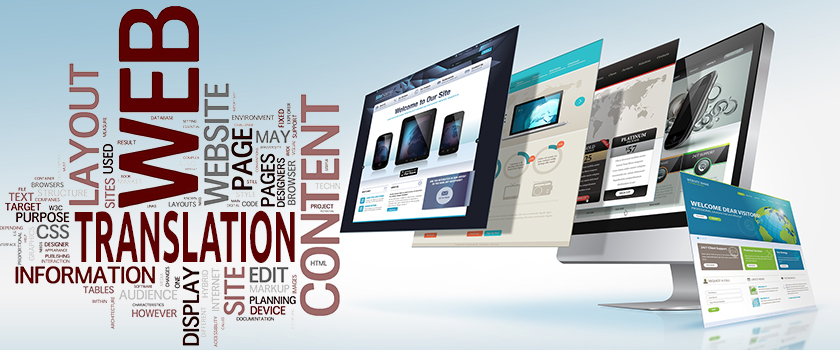2025 Offer Request a Quote Today and Grab a $50 Coupon for Free!
Machine translation is getting popular among enterprises and language service providers globally. MT engines have become so advanced and offer high-quality translations in the fastest turnaround time. There are so many options available in the markets that can confuse anyone about the right MT software choice.
How to assess the capability of any machine translation software to ensure that it will fit your localization project needs. Well, it is quite challenging to find the right MT engine that will fulfil your unique brand localization needs.
However, you can assess the performance of any MT software with the right knowledge and expertise. Here in this blog, we’ll be discussing how you can evaluate different machine translation engines and choose the perfect one.
It is software designed to generate automated translations in multiple languages. These systems work independently with little to no human intervention. MT software uses advanced algorithms to produce high-quality, relevant, and consistent translations.
In the machine translation software, you have to insert the source text, and it will automatically translate it into another language of your choice. One MT software can translate multiple languages, and it depends on how many language pairs it supports.
Using the translation memory and glossaries, these systems generate quick translations with no compromise on quality. Modern MT systems are efficient enough to produce natural translations that you can hardly tell that it is generated by a machine, not a professional translator. You can also customize your MT system features based on the core needs of your brand localization.
Before getting into the types of machine translations and how to access MT software, you better know how it works. You insert a text into the MT software, and it swaps the words from one language to another. It all happens in a matter of seconds. However, the processes and methods used by each MT software vary, which can augment or reduce the quality of translations that it produces.
A basic level of the MT system would automatically replace the words from the source language with the target language. Some MT tools use the corpus method to generate more complicated translations, such as translating idioms, poetry, or acknowledgments.
Every TMS contains different features that again have a huge impact on the work and capability of that system. Currently, we have advanced MT systems that can produce translations that look quite natural.
Here are different types of machine translation methods that have been used over decades. While choosing your machine translation system, it is also important to consider the MT model that it uses to generate translations. The following are four major types of MT methods.
This translation method uses statistical models for translations. These models analyze large volumes of bilingual data to produce translations. In this model, the system has to evaluate the correspondence between both source and target language text. Google translate is a fine example of this translation model.
You might not need this MT model to produce basic translations. This translation model is also not very good with the context, which means statistical machine translation software might not be an ideal choice if you want high-quality translations.
You may find different types of statistical-based MT models, such as syntax-based translations, hierarchical phrase-based translations, phrase-based- translations, and word-based translations.
This translation model follows the grammatical rules. This model was used in one of the very first commercial machine translation systems. It examines the grammar of both source and objective language to ensure that sentences are grammatically correct.
However, translations generated by rule-based models need extensive editing. MT systems that work on such models are highly dependent on glossaries to create relevant translations. This mode may take some time to gain substantial proficiency in the translation.
With time the quality of the translation may improve with the rule-based algorithm and become wiser with experience. To maintain high-quality translation, the glossaries should be clear and comprehensive.
Any sort of ambiguity in the terminology of the dictionary may lead to low-quality translations. Moreover, the translation outcome of this model seems more robotic, and it lacks the fluency that makes a translation difficult to read.
This machine translation model is the combination of both statistical-based translation and rule-based translations. Hybrid machine translation uses translation memories to generate quick translations. The best thing about this model is that it generates high-quality translation keeping the brand voice consistent.
However, there are some downsides to consider as well. First of all, hybrid model transitions need a lot of editing. You might need some professional human translators for the editing of these translations. This model uses different approaches to generate translations, such as statistical rule translation, multi-pass, multi-engine, confidence-based, etc.
In these translations, the rules are used to direct and guide the statistical engine to generate more accurate translations. This model implements grammar rules in the post-editing process of statistical translations. So, mixing these two models enhances the translation quality and readability.
This machine translation depends on neural network models that build statistical models to generate automated translations. Unlike other translation models, this model uses artificial intelligence technology to generate translations.
The neural machine translation model works very similarly to the human brain. These neural networks used in this translation evaluate large datasets to generate highly relevant, quality translations.
Moreover, working on this translation model required human involvement from the administration. There are two sections in this MT model, one is an encoder, and the second is a decoder neural network.
These neural networks would need huge memory to improve the overall translation performance. Baidu Translate and Google Translate are two popular examples of MT engines that use neural network models for translation generation.
There are several factors one has to consider while choosing the most appropriate machine translation software. Below are some important points to consider for choosing the perfect MT Software to fulfil your translation requirements.
First thing first, the MT software you are going to choose highly depends on your content type. You must understand the content genre, for which you want machine translations. Every content genre uses specific terminologies and tone that should be kept in mind while buying professional MT Software.
For example, the software that you would use for legal and medical translation will be different from the software used for basic-level translations. Based on the complexity of your content and the quality required, your MT software choice would vary accordingly.
Any basic-level translation software might be a good idea for non-technical translations. However, for translating sensitive and technical data, you better get professional-level software with smart features, so your translation quality remains consistent.
You need to translate text to one language, or maybe you need translations to/from multiple languages. In this scenario, you must know how many language pairs you want to translate to and from. Different machine translation systems support different language pairs, and you must find the one that would meet your translation needs. Knowing your existing and future translation needs would help you choose the right MT Software.
Not one MT Software can be a perfect choice for diversified businesses. You have to modify your software to the unique corporate business logic. This will help you generate highly relevant translations. LSPs that have to work on different brands simultaneously, must separate each translation project and create separate business logic for each project.
This way your brand voice will remain consistent across different regions. You can use one business logic for two healthcare brands, it might not work for diversified industries, such as healthcare and furniture.
One more factor to consider while choosing your translation software is time and budget. Time refers to the time that software takes to complete one document of translation, editing, and other file management operations.
Budget, on the other hand, is the pricing of that software, and the value it is offering for that money. Analyzing your software on these factors is going to keep the translation management hassle-free for you in the long run.
So, you need to compare the speed of each software and the translation it can manage on a regular basis. Similarly, you must use your money wisely on systems that are offering good value for your investment.
Above we have listed some basic factors to consider while choosing an MT Software. However, there are also some advanced methods to assess the credibility of your translation software. Below are some critical MT Software analysis methods that you can use to assess the effectiveness of your MT system.
Not all MT systems are created equal. From the method of generating translations to the quality of translations, every machine translation technology uses different technologies and features.
Comparing the features of translation software is a smart way to access the credibility of these systems. Analyzing features would give you an idea about how credible are the translation processes and how this system ensures the quality and consistency of translations.
When it comes to features, you must make sure that your MT software contains translation memories that will enhance the speed and quality of translation. Moreover, there should be an option for glossaries to ensure continuity of translations. Similarly, you must also analyze the security and QA features of your MT software.
This assessment method is used to analyze the quality generated by a system using the numerical scoring method. You can analyze the overall performance level of a professional MT Software using this technique.
The outcomes of these evaluations are then compared with the human judgment of translation quality. There are two main methods involved in automated quality assessment testing.
◘ First is reference proximity, which is done by evaluating different performance metrics, such as translation error rate, bilingual evaluation understudy, or Human-translation error rate.
◘ The second is performance-based methods, where the performance is assessed by evaluating how someone achieves a task based on a degraded result produced by MT.
This is the most useful assessment method if you are using a cloud-based MT Software where the functionalities of each translation project are selected based on its unique requirements. All algorithms use the auto-select features while doing translations that would select the best-integrated functionalities to fulfill a translation project requirements.
So, if you are a language service provider who has to deal with different types of translation projects then you can use this assessment approach. For every unique translation project, you can bring in the best features required to produce a quality translation.
Here is a quick list of some characteristics that your machine translation software must possess for seamless and hassle-free translation management.
In your MT software, it is a database that contains previously approved translations. MT systems use these translations as a guide to generate new translations more quickly, keeping the brand voice consistent.
A glossary is a type of dictionary that contains brand terminologies, definitions, acronyms, and other words that will remain unchanged throughout the translations. Glossaries enable the MT system to get more understanding of a brand and create relevant translations.
To maintain the quality of translation and ensure error-free content, your software should have a reliable quality assurance system integrated. This tool will automatically detect and eradicate the basic-level grammatical and conceptual mistakes from translations.
Cloud-based MT Software should use advanced security measures to ensure the protection of data security. Especially, if you are managing sensitive translation, such as medical and legal documents, your software better has powerful security features.
Using cloud MT Software would make your translation management super easy and hassle-free. These systems are easy to set up and customizable to your brand translation needs. Moreover, you can scale the cloud MT anytime you want.
There are so many aspects you have to evaluate to assess the performance level of your translation system. Based on your brand translation needs, your MT software must contain all the tools and features to meet your translation requirements.
You can use any of the assessment approaches mentioned in this article to select the right MT Software to fit your brand needs. Marshub provides a professional online TMS tool to generate automated translations quickly. It's an affordable and reliable tool that comes with advanced translation features to serve your diverse project needs.

Language variations are quite noticeable every few miles, reflecting the unique identity of each region. Talking about India, the country
Read more
The term ‘woke’ has come from the black culture and now it has been removed from its origin after it
Read more
Mars Translation provides high quality and professional Certified French Translation Services all over the world. We have a team of
Read more
Mars Translation provides one of a kind professional Chinese Document translation services all over the world. All of MT’s translators
Read more
MarsTranslation provides one of a kind Chinese Legal Translation Services. We have a team of native Chinese linguist who specialize
Read more
Chinese Certified Translation services is one of the most asked for service at MarsTranslation. We believe in providing quality services
Read more
Mars Translation is one of the fastest growing companies in the translation industry. This is the reason why we pay
Read more
MarsTranslation has a huge team of website translation specialists in more than 230 languages. Our translators are constantly supported by
Read more
Mars Translation provides high quality and professional Certified Spanish Translation Services all over the world. We have a team of
Read more

